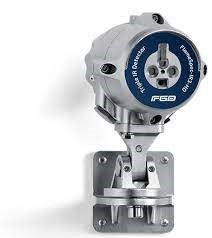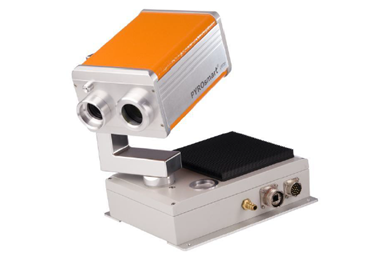DEVELOPMENT OF A FIRE HAZARD SITUATION
To allow a fire to develop it needs an ignition source (heat), fuel (material that can burn), and an oxidizing agent (usually oxygen), combined in the right mixture. In the first stage of a fire (incipient stage) there will only be non-flaming smoldering with the creation of heat and a limited amount of smoke, if any. Unless we have a surface incident there will not be any flames.
In the following stages the amount of heat created will increase and smoke will continuously develop to a wider extent. Only after some time will flames develop, that will ultimately also show on the surface as flames. Depending on the type of material burning the color of the smoke and flames will differ. With time, sufficient oxygen and fuel the fire will develop and grow.
Only when either the oxygen or the fuel is depleted, the fire will decay. This can either happen naturally, or through extinguishing efforts. The earlier a developing fire is detected and the extinguishing efforts commence, the easier it will be to control and extinguish the fire hazard.
FIRE DETECTION SYSTEMS
Various kinds of fire detection systems have been developed over the years. Basically, we can differentiate between three types of fire signatures with their corresponding detection methods.
- Heat
- Flame
- Smoke
All detectors have in common, that they are designed to detect, but not control a fire, although fire detection and extinguishing can be combined. The simplest version of a combined system is a conventional sprinkler, a more complex solution is a hot-spot detection system with automatic pinpoint placement of water, wetting agent or foam.
HEAT DETECTION
A basic form of heat detection can be done via Spot or Linear Heat Detectors. They provide fast and reliable detection of overheating. The system consists of at least one temperature sensor or one length of heat sensing cable and a controller. The temperature sensors are installed above or around the area to be monitored. The heat sensing cables are installed along or around the area to be monitored. When an overheat event occurs, the temperature of the spot sensor or the cable increases. Once it reaches a predefined temperature, the controller reports an event to the fire alarm control panel. Dependent on system type and setup a general alarm can be given, or the control panel can provide an accurate location of where the overheat event was detected. Due to air movement, it is possible that the site of the overheating and the location of the alarm does not match exactly.
In modern, advanced fire detection installations heat detection is achieved through thermal imaging by using infrared (IR) detection technology. In contrast to detecting smoke or a fire, the environment is monitored for radiated heat. By continuously monitoring a specific point or area and measuring the actual radiated heat, or analyzing the increase in temperature, fires can be detected, even if they have not yet developed a visual flame or reached the surface of a pile. The rise of hot gases and the consecutive heating of materials generally is sufficient to allow a fire or be detected. Usually, temperatures of 80°C are considered strong indicators of a fire. Heat monitoring of an object with an infrared early fire-detection system means a fire may be identified in its incipient (formation) phase.
FLAME DETECTION
A flame detector is a camera that is designed to detect the radiation that is emitted by a flame. Depending on the sensors used, different types of fires can be detected. As with infrared detection systems specific zones or wider areas can be monitored. As with smoke detectors, the fire detectors raise an alarm once a fire has been detected. Dependent on the utilized software for analysis, the location or area of a flame can be determined.
As an alternative to the detection of radiated heat, video flame detection can be used. Video flame detection generally consists of a digital video camera coupled with a computer running video analytic software which can recognize flames in the image.
SMOKE DETECTION
Smoke detectors are devices that detect particles in the air. During the development of a fire smoke is created, which will contain various differing particles that can be sensed. Smoke detectors can either be devices that air streams through, or they can be aspirated, which means that the system draws air through a network of pipes and uses a central detection unit. Aspirated units can typically detect smoke before it is visible to the naked eye.
Smoke detectors are mainly installed under the ceiling to monitor complete halls or sections of a big area. Especially passive smoke detectors generally require a large amount of smoke to trigger an alarm. Another possibility for smoke detection is the use of video smoke detection. Video smoke detection generally consists of a digital video camera coupled with a computer running video analytic software which can recognize smoke in the image. The systems can monitor large volumes to look for visible indications of a fire.

Flame detector (Picture courtesy FGD Fire & Gas Detection Technologies)

Infrared camera for full monitoring of large surfaces aided by panoramic thermography (Picture courtesy Orglmeister)
FIRE PROTECTION SYSTEMS
The main extinguishing systems used in facilities that utilize fire detection systems are deluge systems and firefighting monitors. Dependent on the goods that must be extinguished, water, wetting agent or foam can be used as an extinguishing agent. As mentioned above, a special and likely the most common used automatic detection and extinguishing system is a sprinkler system.
SPRINKLER SYSTEMS
Sprinkler systems are mainly used indoors and are generally water-filled. A fire's heat will activate individual sprinkler heads that will release extinguishing water onto the area below it. If the fire spreads, additional sprinkler heads are activated to extend the extinguishing capability. Each sprinkler head is designed to protect an area of several square meters. Large areas are exposed to the extinguishing water when several sprinkler heads are activated, and the system usually must be manually deactivated. Depending on the distance between the fire and the sprinkler heads, they may be triggered too late to successfully extinguish the fire. They are mainly used in areas with low ceilings.
Sprinkler systems can alternatively be filled with a foam premix that generates extinguishing foam once released. The premix is made using specially designed proportioning systems, such as the GEN III water motor-driven proportioning pumps made by FireDos. They are especially suited for sprinkler systems due to the low minimum flow requirement when only a small number of sprinklers are activated and the big spread in water flow needed when all sprinklers may be open.
Sprinkler systems are not designed to be used with external fire detection systems, unless each sprinkler head is equipped with its own remote-controlled valve.
DELUGE SYSTEMS
Deluge systems are sprinkler systems with open nozzles. They can be manually operated or may be equipped with remote-controlled valves that are triggered by heat, flame or smoke detections systems. On activation, extinguishing will occur in the complete pre-designed section of a larger area. As with sprinkler systems, deluge systems are typically used indoors.
FIREFIGHTING MONITORS
Firefighting monitors, like the distinctive octagonal 'Oval Flat Design' from FireDos, are designed for indoor or outdoor use. When a fire is detected, they are either manually operated or can be remotely or automatically controlled. Fire monitors allow precise positioning of fire extinguishing media (water, foam or wetting agent) on a hot spot from a safe distance. When using appropriate software, automatic remote controlled fire monitors can place water on the hot spot identified by the detection system.
Dependent on the fire extinguishing system setup, it is possible to switch between water, wetting agent and foam. Firefighting monitors are optimally suited to be combined with detection systems to form an automatic fire extinguishing system.


